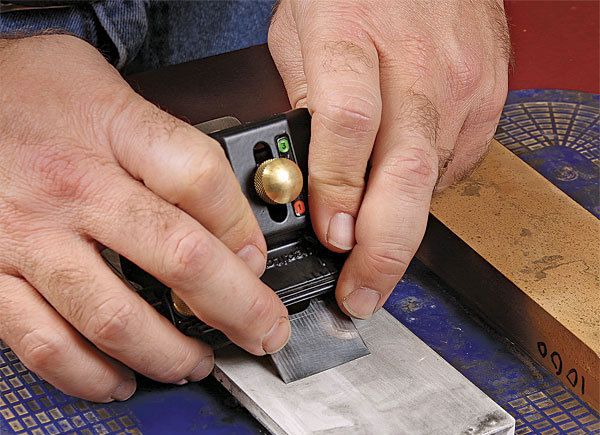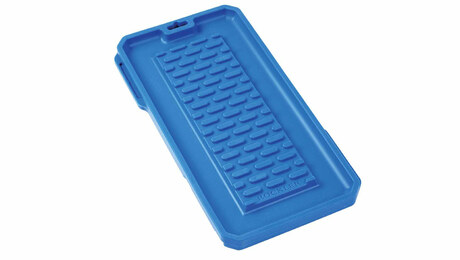A Honing Guide is the Great Equalizer
Get your chisels and planes as sharp as the pros', guaranteed

Synopsis: Two tips for those who struggle with sharpening: Use a honing guide and go up to 8,000 grit. Any way you look at it, honing by hand can be tricky for those who don’t do it every day. A honing guide takes the guesswork out of the process: You can buy an inexpensive one, set a blade in it quickly, and get perfect results every time. Learn how to choose a good honing guide and set it up for best results. Then you can get back to woodworking and stop worrying about whether your tools are sharp, because they will be.
From Fine Woodworking #225
I hear from a lot of readers who struggle with sharpening, and I always pass along my two personal breakthroughs: Use a honing guide and go up to 8,000 grit.
Not everyone agrees with the first part. Roughly half the teachers I know tell their students to hone by hand, balancing the tool on its bevel by feel. That’s not the best advice for hobbyists, if you ask me. Those who advocate handheld honing are mostly professional furniture makers, who sharpen their tools every day and don’t want to waste time. I admit, with zero setup time the method is faster than a honing guide, but most hobbyists don’t sharpen their chisels and plane blades every day, or even every week, so they never develop and maintain the finely tuned muscle memory that handheld honing requires.
And if you rock that edge on the stone, even a little bit, you might not be sharpening the very tip. For peace of mind, use a honing guide. You might experience true sharpness for the first time. Then you’ll know what all the hand-tool fuss is about.
To understand why handheld honing is tricky, you need to understand the process. For starters, it works much better with a “hollow grind,” the scooped-out bevel formed by a wheel of some kind. Then you rock the tool on the sharpening stone, feeling for the little bumps that tell you the bevel is resting flat, and then try to keep at that same angle, riding those two tiny points evenly as you move the blade up and down the stone. (It’s easier on chisels, which have a longer bevel, than on plane blades, which are thinner.)
But if you rock the blade at all as you move it, the system breaks down. Here’s why. Like sanding a wood surface, you need to work your way up through the abrasive grits (grinding at a coarse grit, then usually going to a series of stones: 1,000-grit, then 4,000, then 8,000) to end up with a polished secondary bevel at the tip of the tool.
For the full article, download the PDF below.
Fine Woodworking Recommended Products

Rockler Silicone Sharpening Stone Tray

Wen Diamond Grinding Wheel

Norton Water Stones








Comments
Some of us oldtimers started out with good oilstones and they work well. I would be grateful if your articles mentioned the type of oilstones in your stories (Washita, Arkansas, Norton, etc.)
Log in or create an account to post a comment.
Sign up Log in